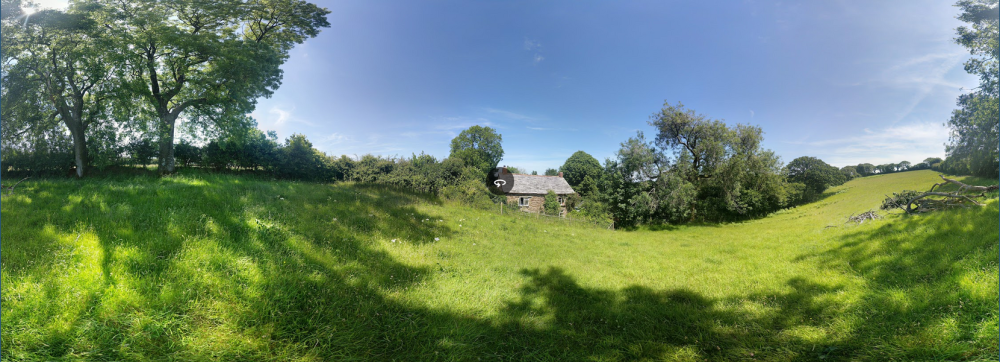-
Posts
8 -
Joined
-
Last visited
Personal Information
-
About Me
Middle-aged computer geek helping his big brother with the maintenance and development of a smallholding property in Cornwall
-
Location
Cornwall
Recent Profile Visitors
The recent visitors block is disabled and is not being shown to other users.
DavyH's Achievements

New Member (2/5)
1
Reputation
-

How to safely link our own spring water with the mains supply
DavyH replied to DavyH's topic in General Plumbing
This comes bracketed with a heavy disclaimer of "I am not an expert and you have my permission to laugh if I die of enteritis", but I've consistently read that coliform bacteria are a huge class, of which the vast majority are harmless and fairly ubiquitous in soil and surface water, which our spring is. Most coliform bacteria aren't E. coli, and even most E. coli aren't pathogenic. You test and treat for any coliforms because it's a quick cheap test and a safe approach — if you've got no coliforms then you've got no problem. I thought Coliform Bacteria in Drinking Water was a nice explanation, if you don't mind translating from the American. Obviously if there was any chance the coliforms were from human crap, I'd be radically more strict about this, but there's no human presence anywhere uphill from the spring. The water filters in through subsoil and collects some blown leaf-litter (we might enclose it), so it's pretty much inevitable that there'll be some coliforms in it, without necessarily being any health risk. There's a certain amount of sheepshit on the fields uphill, but I admit to being fairly blasé about that after the water's filtered through umpteen metres of ground. I'm still in favour of sterilising it though! My point is just that the presence of coliforms doesn't per se make it a health risk, any more than the presence of Cornish people in your house means you're about to be abducted and used for pasty meat. You just exclude them on principle as a sensible safety measure in case any of them are from Camborne. -

How to safely link our own spring water with the mains supply
DavyH replied to DavyH's topic in General Plumbing
The feedback in the first response on this thread was, "But overall it's a daft idea", and the more I learn, the more I agree! At this point it looks likely that I'll recommend to the house's occupant that they just stay on the mains. On the other hand, I remain fascinated by the topic, so anything else anybody wants to share is of great interest (and possibly even useful to others reading this thread in the future). At this point, my original question (about connecting private and mains water) is toast — yes, I would absolutely not do this. I have seen the light. At a minimum I'd run the mains water to a break tank and repressurise it. I read the G1 and G4 regs, and also the Private Water Supplies (England) Regulations 2016, and in fact the last one was the most educational because it lays out all the risk-assessment, inspection and testing requirements. Open question 1: how much do risk assessments and periodic testing cost in practice for a single-household supply? The Private Water Supplies Regulations laid out a schedule of maximum costs, but this was removed later, and I haven't yet found a description of what the real-world costs look like. Open question 2: does any manufacturer sell an integrated system for fail-safe UV sterilisation and pumping? @sharpener made a good point about redundancy and fail-safe operation (although they appear to be specifically worried about pathogenic E. coli, which isn't likely in our case). I've been shopping around for a do-everything box which both sterilises and pumps the water, and stops pumping if it can't sterilise, so it's guaranteed not to pass untreated water. But I haven't found one, which surprises me because I'd have thought this was an obvious niche in the market. I could make something myself based on (say) a Daro UV Saphir (or two) and some control logic, but it's always a red flag when you find yourself reinventing a solution like that... -

How to safely link our own spring water with the mains supply
DavyH replied to DavyH's topic in General Plumbing
You're a star. That's exactly the kind of pointer that's incredibly helpful. Reading now! Info for anyone else needing the same information in future: "Approved Document G" is the Building Regulations section for "Sanitation, hot water safety and water efficiency" Short FAQ for the document to get you started: https://assets.publishing.service.gov.uk/media/5a81a884e5274a2e8ab552a5/160321_Part_G_FAQ.pdf The document itself: https://assets.publishing.service.gov.uk/media/66f6c6ce3b919067bb4828cc/ADG_with_2024_amendments.pdf if those links break in the future, here's a Google search that should pick the documents up: https://www.google.com/search?q=approved+document+g+sanitation+hot+water+safety+and+water+efficiency -

How to safely link our own spring water with the mains supply
DavyH replied to DavyH's topic in General Plumbing
Thank you everyone for the input! The most important thing I've learned is that the water people are going to be even more stringent than I thought about not letting anything nasty anywhere near the public supply ever under any circumstances. Which I fully support. As @SteamyTea points out, water is quite pricey here in Cornwall so I won't be abandoning the idea just yet, but I'll assume the mains water and spring water never touch. As they say in Ghostbusters, "Don't cross the streams!" -
Avast with this discrimination! You're making it sound like Snozzle's a one-trick radon pony, when we're also renowned for a rich palette of grinding unemployment, sustained underinvestment, low-grade narcotics, overstretched healthcare, industrial blight, economic depression, pervasive anomie, and the Eden Project. Don't knock the radon: a little gamma radiation is about the only sparkle most of us are going to get.
-
Hey, some of us like having extra toes... Or is that our marriage choices? But yes, when they came out to measure the radon they looked worried and told us to install a radon sump p.d.q. The damp-proofing my parents put in must have helped a lot but I'm not sure there's anything that stops gas percolating through a cob wall... Thanks for the welcome! ♥
-
If you're familiar with the jargon here, then my core question is "what is the WRAS fluid category of my spring water?" But I'll start at the beginning. 😁 Our place has a surface spring on the property, and I'm looking at setting up an independent water supply. Recent lab tests show that the water is fine except for a high level of coliform bacteria. People have been drinking from that spring for decades without problems, but fair's fair — I'll UV-sterilise the water. So far so good. Here's my problem: I'd like to keep the mains water connected so I can switch back to it in case the home system ever fails. This means a direct connection between my spring water and the mains. I understand that I need a check valve on the mains side, and the type of check valve depends on the fluid category of the spring water. What's not clear to me is which category my spring water will actually be. I'm hoping I can get away with category 3 (which is roughly "icky, but harmless if diluted"), because a check valve for that is about £50. If I need to take into account a possible failure of the UV steriliser, and raw spring water reaches the check valve? I guess then it'd count as category 4 (which I read as "maybe okay but don't chance it"). At that point it seems you're into much bigger leagues, with "reduced pressure zone" valves costing several hundred quid, and mandatory notifications, yearly inspections and stuff. Still doable, just, maybe... Or would the presence of any coliform bacteria automatically make it category 5, on a par with raw sewage? Frankly, that'd probably scupper the project. Can anyone give me any guidance on what'd be the right approach here, and what an inspector would be likely to accept? There's a lot of good information on how to handle the individual categories, e.g. a post from @TerryE back in 2017 (Addressing backflow risks in wet/bathroom design), but that seems to be talking about fluids you already know are category 3 or 5 or whatever, and that's where I'm stuck...
-
DavyH changed their profile photo
-
Hi folks! Disclaimer: it's not actually my farmhouse, it's my big brother's. But I help with some of the work and I'm the geek in the family, so I tend to be the one who goes fishing for information online, so I'll tend to say things like "my house" for simplicity. The house is on a few acres of land in south Cornwall. It's about 200-300 years old depending on which bit of it you poke, and it's been in the family for about 50 years. Earlier generations kept up the structure (roofing, damp-proofing etc.) but didn't do a whole lot about creature comforts. Apart from general renovations and a lick of paint, our current priority is to get it a bit warmer and more comfortable by running a basic hot-water and radiator system from the wood stove, which we mostly feed with wood from the property. That's nearly done and we're starting to look at our own solar or wind power, and running a water supply from the well on the property rather than the mains. Pleased to meet ya all and looking forward to the discussions!




